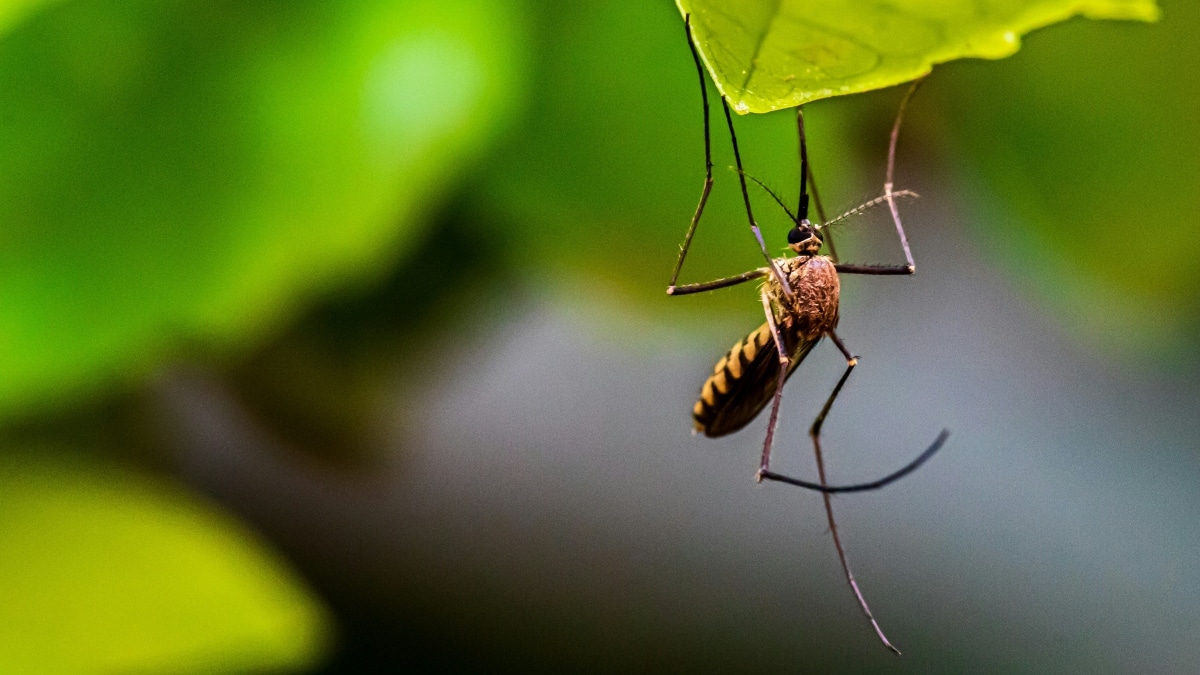Dengue Fever in Central America Guide
5 min readProtect yourself from dengue fever in Central America. This guide covers symptoms, prevention tips, treatment, and advice.
The post Treating and Preventing Dengue Fever in Central America: A Guide for Travelers and Expats appeared first on Central America.

Protect yourself from dengue fever in Central America. This guide covers symptoms, prevention tips, treatment, and advice for traveling to high-risk areas during the rainy season.
The Pan American Health Organization (PAHO) recently reported elevated levels of dengue fever across Central America, Mexico, and the Caribbean so far in 2024. As we enter the rainy season, the peak period for dengue transmission, cases are rising around the region, prompting PAHO to call upon health authorities to take preventative measures. This guide covers what dengue is, how to prevent it, and what to do if you develop symptoms in Central America.
🛎️ PAHO urges countries to strengthen #dengue prevention in Central America, Mexico and the Caribbean.
ℹ️ Read more:https://t.co/oEZoJnODQ6 pic.twitter.com/AM77HU9hwY
— PAHO/WHO (@pahowho) May 25, 2024
About Dengue Fever
Dengue is a viral illness transmitted by Aedes mosquitoes, primarily the Aedes aegypti and Aedes albopictus species. These mosquitoes acquire the virus by feeding on someone already infected with dengue. They then spread it further through subsequent bites.
For most people, infection leads to “classic” dengue fever causing a sudden onset of high fever along with severe headaches, muscle and joint pains, nausea, vomiting, and a characteristic skin rash. These symptoms typically resolve within 1-2 weeks. Sometimes, symptoms are so mild they feel flu, although the muscle, bone, and joint pains (they don’t call dengue “breakbone fever” for nothing) can be a sign to look out for.
In some cases, dengue can progress to a more severe form called dengue hemorrhagic fever or dengue shock syndrome. These advanced stages involve internal bleeding, impaired liver and kidney function, dangerously low blood pressure, and plasma leakage. Severe dengue requires hospitalization to manage with IV fluids, blood transfusions, and intensive supportive care.
Those at elevated risk of developing severe dengue include people with weakened immune systems as well as individuals who’ve previously been infected with a different dengue virus strain.
Common Symptoms of Dengue Fever:
- High fever
- Severe headaches
- Muscle and joint pains (that “breakbone” feeling)
- Nausea
- Vomiting
- Characteristic skin rash, typically appearing 2-5 days after fever onset
- Mild bleeding issues like nose bleeds, bleeding gums, easy bruising
Potential Severe Dengue Symptoms:
- Uncontrolled internal bleeding
- Organ impairment, especially liver and kidney issues
- Dangerously low blood pressure
- Plasma leakage from bloodstream
- May progress to dengue hemorrhagic fever or dengue shock syndrome
Other Symptoms:
- Fatigue
- Pain behind the eyes
- Enlarged lymph nodes
Dengue—spread by infected mosquitoes—is found in most tropical & subtropical regions, incl. popular tourist destinations.
Continue preventing mosquito bites for 3 weeks after you return home. Symptoms incl. fever with aches & pains, rash, or nausea. https://t.co/D3KFNUOBeA pic.twitter.com/KuKVvvMNO0
— CDC (@CDCgov) April 12, 2024
2024 Dengue in Central America Situation
As of mid-May 2024, PAHO reported over 8.1 million suspected dengue cases across the Americas. This marks a 3.3-fold increase compared to the same period in 2023. More than 3,600 associated deaths have already occurred. The hardest hit countries so far are Brazil, Argentina, Paraguay, Peru, Colombia, and Mexico. However, dengue spikes are also happening in parts of Central America.
Guatemala had over 12,000 cases as of mid-May, Honduras over 20,000, and Panama over 5,800. In some Central American nations, dengue numbers are up between 2.5 to 6 times higher than case levels at this point last year as the wet summer months bring increased mosquito activity. In Costa Rica for example, local media reported on May 5 that the country has seen over 7,531 cases in 2024, up from 1,179 by the same date in 2023.
The Caribbean islands have also experienced a 5.7-fold year-over-year increase, reporting over 21,000 suspected dengue cases so far in 2024.
Casos de dengue en Costa Rica avanzan a ritmo seis veces mayor respecto a 2023
En lo que va del 2024 se registraron 7.531 casos de esta enfermedad, frente a 1.179 contagios que se habían detectado a la misma fecha el año pasado.https://t.co/1n7PTrVcEv
— Telenoticias (@Telenoticias7) May 6, 2024
Preventing Dengue
With no specific cure or vaccine providing complete protection yet, preventing dengue fever relies on avoiding mosquito bites altogether when traveling to affected regions like Central America during peak season. The CDC and PAHO recommend taking the following precautions:
- Use EPA-registered insect repellents containing DEET, picaridin, IR3535, or oil of lemon eucalyptus on all exposed skin and clothing.
- Treat clothing and outdoor gear with permethrin insecticide, which lasts through several washings.
- Wear long sleeves, long pants, socks, and closed shoes to limit accessible areas for mosquito bites.
- Stay in accommodations with intact window/door screens and air conditioning to prevent mosquitoes entering.
- Eliminate any sources of standing water around your lodging, as these are prime mosquito breeding sites.
- The dengue-spreading Aedes mosquitoes are most active during daylight hours, especially around dawn and dusk.
- Limiting time outdoors can further reduce exposure risk.
Treating Dengue
If you develop potential dengue symptoms like high fever, severe headache, muscle/joint pains or nausea while traveling, seek medical care immediately for evaluation and testing. For typical dengue, treatment focuses on fever control using medications like acetaminophen, pain relief, and aggressive rehydration. Aspirin and anti-inflammatory drugs are avoided as they can worsen bleeding risks. Some recommend taking papaya leaf extract or teas, claiming it provides therapeutic benefits. And while evidence of efficacy is limited, enough local communities around Central America swear by papaya leaf as a treatment, especially for soothing mild forms of the disease.
If dengue advances to the severe hemorrhagic or shock syndrome stages, hospitalization is required. This may involve IV fluid administration, blood transfusions, and intensive care for complications like internal bleeding or organ impairment.
Mild Dengue Fever Treatment:
- Get plenty of rest
- Drink plenty of fluids
- Take acetaminophen for fever and pain relief
- Avoid medications like ibuprofen that can make fever worse
For More Severe Dengue Fever:
- Seek medical treatment
- Let your doctor know about the high fever and watch for signs of dehydration
- Be prepared for IV fluids in case of severe dehydration
Other options:
- Use fever-reducing methods like cool showers or cold compresses
- Consider natural remedies like papaya leaf extract, ginger, or turmeric tea
- Let the fever run its course as long as it stays under 102°F
Planning a move to Central America? Ensure access to top-notch healthcare for you and your family with our guide to the best hospitals in the region.https://t.co/MJee4wYE0C
— Central America Living (@VidaAmerica) May 23, 2023
Higher Elevation Lowers Risk
It’s worth noting that your risk of dengue is lower at higher elevations, like some of Central America’s highlands and mountain towns. Think anything over around 1,600 meters (5,200 feet). The Aedes mosquito vectors struggle to survive and breed effectively in these cooler environments compared to lower-lying coastal areas where transmission peaks during the rainy season.
However, taking preventive precautions is still advisable at any elevation during the rainy season. With cases surging across the Americas, exercise vigilance with mosquito bite prevention measures when visiting Central America over the coming months. Following basic guidance can help ensure safe travels.
Discover more from Slow Travel News
Subscribe to get the latest posts sent to your email.



